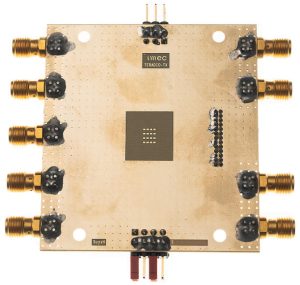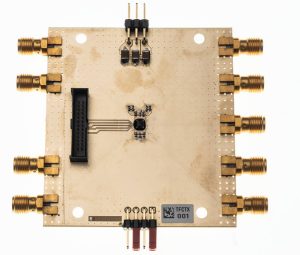“It is a key component of a 4-way beamforming transceiver chip currently being developed by imec’s researchers,” according to the Belgian research lab. “With this technology, they aim to support the deployment of short-range wireless services at frequencies above 100GHz.”
It sees Gbit/s communication in the on the sub-THz bands between 100 and 300GHz being used for wireless fail-safe mechanisms in data centers, for fixed wireless access, and in wireless hotspots for ‘extended reality’ applications. For combined communication and sensing, the high frequency allow high-resolution range measurement for gaming, smart buildings and Industry 5.0.
“When CMOS technology ventures into the realm of 100GHz and beyond, it encounters various obstacles,” said Imec programme manager Joris Van Driessche. “The first challenge is to achieve sufficient output power to overcome the higher path-loss at these frequencies. It’s also much more difficult to realise wide-band circuitry with good dynamic range and acceptable power consumption. These challenges are at the heart of our novel CMOS-based D-band beamforming transmitter.”
Local oscillator side
Made in 22nm FD-SOI, the Imec beam-forming transmitter operates between 120 and 145GHz. Each transmitter channel occupies 1.17 x 0.3mm and consumes 232mW.
Power output is 3dBm for 16QAM modulation and 2dBm for 64QAM.
The RF signal chain is simplified by beam-forming in the local oscillator and using a zero-IF architecture. The four-channel analogue baseband section has 14GHz channel bandwidth.
“A unique feature of our chip is its completeness,” said Van Driessche. “To our knowledge, this is a significant first.”
The the beam-forming transmitter circuit which is the subject of the RFIC Symposium paper is part of a complete four-way beam-forming transceiver chip, currently being characterised.
“With this chip, we aim to build a D-band wireless system that will allow partners to experiment with beam-forming and JC&S [‘joint communication and sensing’] said Van Driessche.








